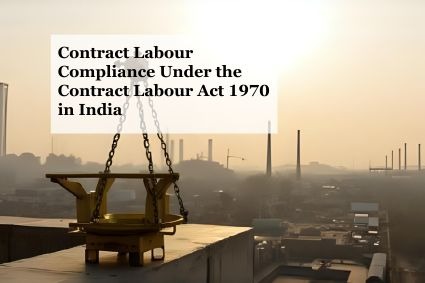Bharti Airtel Ltd. vs. Commissioner Of Central Excise, Pune [CA No. 10409 of 2014 judgment dated 20.11.2024]

In this ruling, the Hon’ble Supreme Court, decided the question of validity of availment of CENVAT credit on mobile tower and prefabricated buildings (PFB). There was conflicting views of two High Courts: (i) Bombay High Court in Bharti Airtel Ltd. vs. CCE [2014 (9) TMI 38] held that mobile service providers (MSPs) are not entitled to such credit; and (ii) Delhi High Court in Vodafone Mobile Services Limited v. CST, Delhi 2019 [(27) G.S.T.L. 481 (Del.)] held that MSPs are entitled to such credit. The primary point was contention was the nature of mobile towers: immovable property or movable property.
Explaining the working of the mobile towers it was stated that the mobile towers are brought to the site of installation in completely knocked down condition (CKD) or semi-knocked down condition (SKD) by the service provider. The tower is installed at an appropriate site based on technological viability. On this mobile tower the antenna is hoisted and fixed at an appropriate height. The mobile tower, in turn, is fixed to the ground or on the top of a building to provide stability and make it wobble free, for effective functioning of the antenna as it requires a particular height and stability. Excise duty paid on such towers has been claimed as credit by the MSPs.
Analysing the relevant legal provisions, the Court observed that Rule 3(1) of the CENVAT Credit Rules, 2004 (‘Rules’) enables a provider of taxable service to claim CENVAT credit paid on any “capital goods” or “input” received. The terms “capital goods” and “input” have been defined under Rule 2(a)(A) and the Rule 2(k) of the Rules. The Court observed that if mobile towers qualify as either “capital goods” or as “inputs” then credit will be available.
Based on such factual and legal position, the Court framed two major issues:
- Whether, for the purposes of availment of CENVAT Credit, mobile tower is an immovable property or movable property (‘goods’)?
- Whether the mobile tower can be ‘capital goods’ as an “accessory” to the antenna which sends and receives signals?
(i) Whether, for the purposes of availment of CENVAT Credit, mobile tower is an immovable property or movable property (‘goods’)?
To interpret the various terms, the Court relied upon the definition of relevant terms from various statues:
- goods: Section 2(7) of the Sale of Goods Act, 1930:
“goods” means every kind of movable property other than actionable claim and money; and includes stocks, shares, growing crops, grass, and things attached to forming part of the land which are agreed to be severed before sale or under contract of sale.
- movable property: Section 3(36) of the General Clauses Act, 1897
“movable property” shall mean property of every description except immovable property.
- immovable property: Section 3(26) of the General Clauses Act, 1897:
“immovable property” shall include land, benefits to arise out of land and things attached to the earth, or permanently fastened to anything attached to the earth.
- attached to earth: Section 3 of the Transfer of Property Act, 1882:
“attached to the earth” means—
(a) rooted in the earth, as in the case of trees and shrubs;
(b) imbedded in the earth, as in the case of walls or buildings; or
(c) attached to what is so imbedded for the permanent beneficial enjoyment of that to which it is attached:
After going though, a catena of case laws on characteristics of an immovable property and movable property, the Court summarised the tests which have to be applied in such case and made following observations:
| Tests | Explanation | Application of test to Mobile Tower |
| Nature of annexation | If the property is so attached that it cannot be removed or relocated without causing damage to it, it is an indication that it is immovable. | The mobile tower is bought and brought in the CKD or SKD form from the manufacturers and same is installed at the site by assembling and fixing to the earth. The tower can be dismantled by unbolting of the nuts and bolts and without any damage to the nature of the tower. |
| Object of annexation | If the attachment is for the permanent beneficial enjoyment of the land, the property is to be classified as immovable. Conversely, if the attachment is merely to facilitate the use of the item itself, it is to be treated as movable. | Attachment of the plant to the foundation is not meant for permanent beneficial enjoyment of either the foundation or the land in which the same is imbedded. [Relying upon CCE, Ahmedabad v. Solid and Correct Engineering Works & Ors (2010) 5 SCC 122] |
| Intendment of the parties | If the parties intend that the property in issue is for permanent addition to the immovable property, it will be treated as immovable. If the attachment is not meant to be permanent, it indicates that it is movable. | The intention was to permanently attach it to the earth but a foundation was necessary to provide a wobble free operation to the machine. |
| Functionality Test | If the article is fixed to the ground to enhance the operational efficacy of the article and for making it stable and wobble free, then such property is movable. | Mobile tower is affixed only for the purpose of maintaining stability of the tower and keep it wobble free so that the antenna which is hoisted on it can receive and transmit the electromagnetic signals effectively and without any disturbance. |
| Permanency Test | If the property can be dismantled and relocated without any damage, the attachment cannot be said to be permanent but temporary and it can be considered to be movable. | Dismantling the tower may entail some damages, but such damages will be on the cables which may be required to be stripped of but no damage is caused to the tower. There may also be some damage to the antenna. But there is no damage to the tower per se. |
| Marketability Test | If the property, can be removed from the immovable property and sold in the market, it can be said to be movable. | Removing and dismantling the tower which is affixed to the earth from the existing site can be re-assembled without causing any change in its character. It can be moved to any other place and sold in the market. |
Based on the above observations the Court held that mobile towers are movable property.
W&B Comments: The question whether mobile towers are movable property or immovable property has been a long standing issue for the purposes of taxation. This question is also relevant for GST because under Section 17(5) of the CGST Act, 2017, ITC of goods and services received for construction of an immovable property (except plant and machinery) is blocked. Further, the Explanation to Section 17(5) excludes ‘telecommunication towers’ from the expression ‘plant and machinery’. However now that the telecommunication tower has been held to be movable property such exclusion shall not result in disallowance of credit.
By entering the email address you agree to our Privacy Policy.



